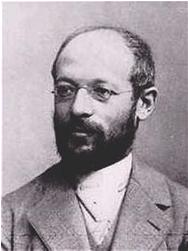Aesthetics is the branch of philosophy concerned with the nature of beauty and the nature of taste; and functions as the philosophy of art. Aesthetics examines the philosophy of aesthetic value, which is determined by critical judgements of artistic taste; thus, the function of aesthetics is the "critical reflection on art, culture and nature".

Beauty is commonly described as a feature of objects that makes them pleasurable to perceive. Such objects include landscapes, sunsets, humans and works of art. Beauty, art and taste are the main subjects of aesthetics, one of the major branches of philosophy. As a positive aesthetic value, it is contrasted with ugliness as its negative counterpart.

Immanuel Kant was a German philosopher and one of the central Enlightenment thinkers. Born in Königsberg, Kant's comprehensive and systematic works in epistemology, metaphysics, ethics, and aesthetics have made him one of the most influential and controversial figures in modern Western philosophy, being called the "father of modern ethics", "father of modern aesthetics" and, by bringing together rationalism and empiricism, the "father of modern philosophy".

Georg Simmel was a German sociologist, philosopher, and critic.

Pierre Bourdieu was a French sociologist and public intellectual. Bourdieu's contributions to the sociology of education, the theory of sociology, and sociology of aesthetics have achieved wide influence in several related academic fields. During his academic career he was primarily associated with the School for Advanced Studies in the Social Sciences in Paris and the Collège de France.
Alexander Gottlieb Baumgarten was a German philosopher. He was a brother to theologian Siegmund Jakob Baumgarten (1706–1757).

The Critique of Judgment, also translated as the Critique of the Power of Judgment, is a 1790 book by the German philosopher Immanuel Kant. Sometimes referred to as the "third critique", the Critique of Judgment follows the Critique of Pure Reason (1781) and the Critique of Practical Reason (1788).
Simon Webster Frith is a British sociomusicologist and former rock critic who specializes in popular music culture. He is Professor Emeritus of Music at University of Edinburgh.

In aesthetics, the sublime is the quality of greatness, whether physical, moral, intellectual, metaphysical, aesthetic, spiritual, or artistic. The term especially refers to a greatness beyond all possibility of calculation, measurement, or imitation.
In art history, formalism is the study of art by analyzing and comparing form and style. Its discussion also includes the way objects are made and their purely visual or material aspects. In painting, formalism emphasizes compositional elements such as color, line, shape, texture, and other perceptual aspects rather than content, meaning, or the historical and social context. At its extreme, formalism in art history posits that everything necessary to comprehending a work of art is contained within the work of art. The context of the work, including the reason for its creation, the historical background, and the life of the artist, that is, its conceptual aspect is considered to be external to the artistic medium itself, and therefore of secondary importance.

Aesthetics of music is a branch of philosophy that deals with the nature of art, beauty and taste in music, and with the creation or appreciation of beauty in music. In the pre-modern tradition, the aesthetics of music or musical aesthetics explored the mathematical and cosmological dimensions of rhythmic and harmonic organization. In the eighteenth century, focus shifted to the experience of hearing music, and thus to questions about its beauty and human enjoyment of music. The origin of this philosophic shift is sometimes attributed to Baumgarten in the 18th century, followed by Kant.

Distinction: A Social Critique of the Judgement of Taste by Pierre Bourdieu, is a sociological report about the state of French culture, based upon the author's empirical research from 1963 until 1968. The English translation was published in 1984, and, in 1998, the International Sociological Association voted Distinction as an important book of sociology published in the 20th century.
This is an alphabetical index of articles about aesthetics.

The sociology of culture, and the related cultural sociology, concerns the systematic analysis of culture, usually understood as the ensemble of symbolic codes used by a member of a society, as it is manifested in the society. For Georg Simmel, culture referred to "the cultivation of individuals through the agency of external forms which have been objectified in the course of history". Culture in the sociological field is analyzed as the ways of thinking and describing, acting, and the material objects that together shape a group of people's way of life.
This is a history of aesthetics.

In sociology, distinction is a social force whereby people use various strategies—consciously or not—to differentiate and distance themselves from others in society, and to assign themselves greater value in the process. In Distinction: A Social Critique of the Judgement of Taste, Pierre Bourdieu described how those in power define aesthetic concepts like "good taste", with the consequence that the social class of a person tends to predict and in fact determine his or her cultural interests, likes, and dislikes.
Four Dissertations is a collection of four essays by the 18th-century Scottish Enlightenment philosopher David Hume, first published in 1757. The four essays are:

Common sense is sound, practical judgement concerning everyday matters, or a basic ability to perceive, understand, and judge in a manner that is shared by nearly all people.
The following outline is provided as an overview of and topical guide to aesthetics:
Everyday Aesthetics is a recent subfield of philosophical aesthetics focusing on everyday events, settings and activities in which the faculty of sensibility is saliently at stake. Alexander Baumgarten established Aesthetics as a discipline and defined it as scientia cognitionis sensitivae, the science of sensory knowledge, in his foundational work Aesthetica (1750). This field has been dedicated since then to the clarification of fine arts, beauty and taste only marginally referring to the aesthetics in design, crafts, urban environments and social practice until the emergence of everyday aesthetics during the ‘90s. As other subfields like environmental aesthetics or the aesthetics of nature, everyday aesthetics also attempts to countervail aesthetics' almost exclusive focus on the philosophy of art.










